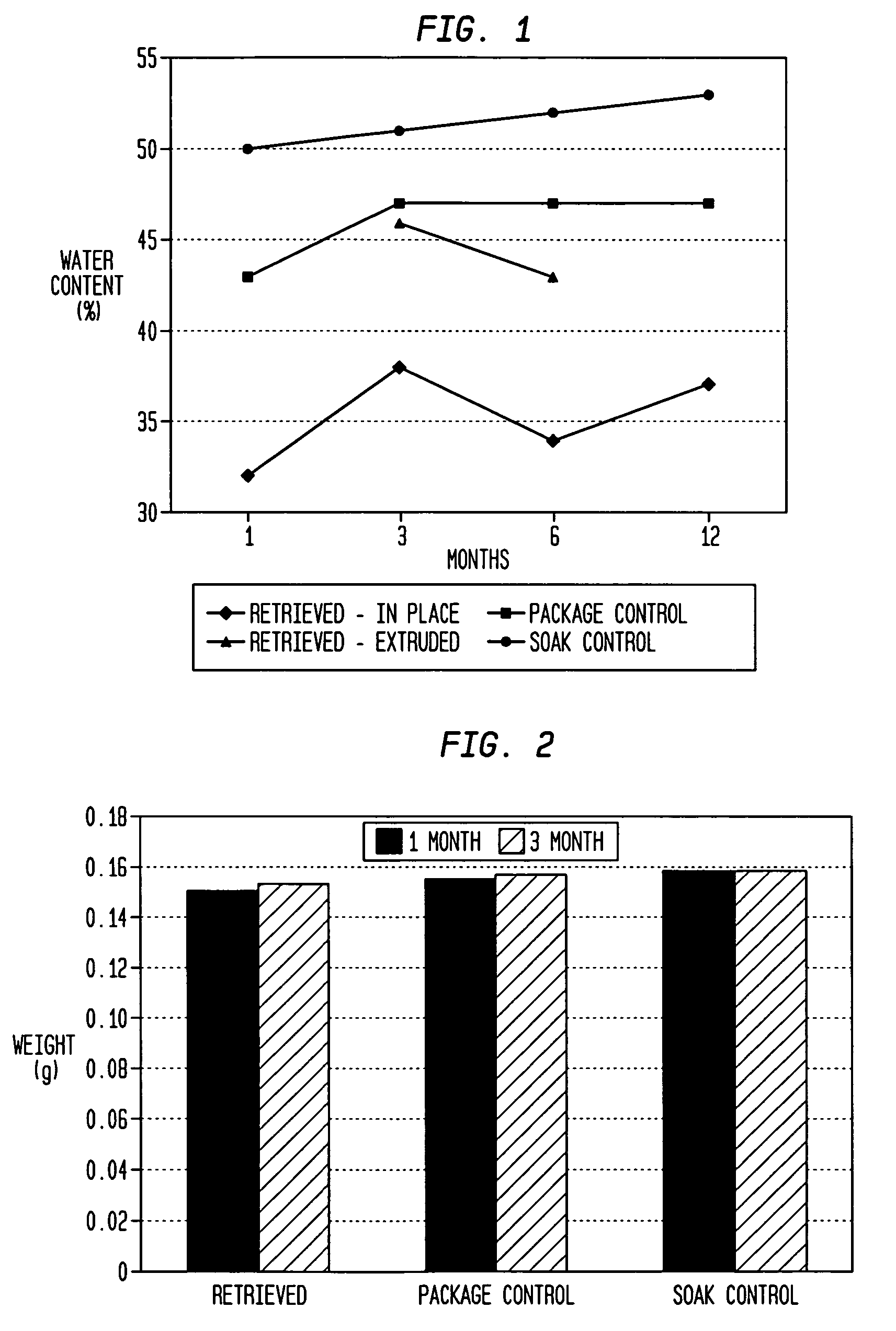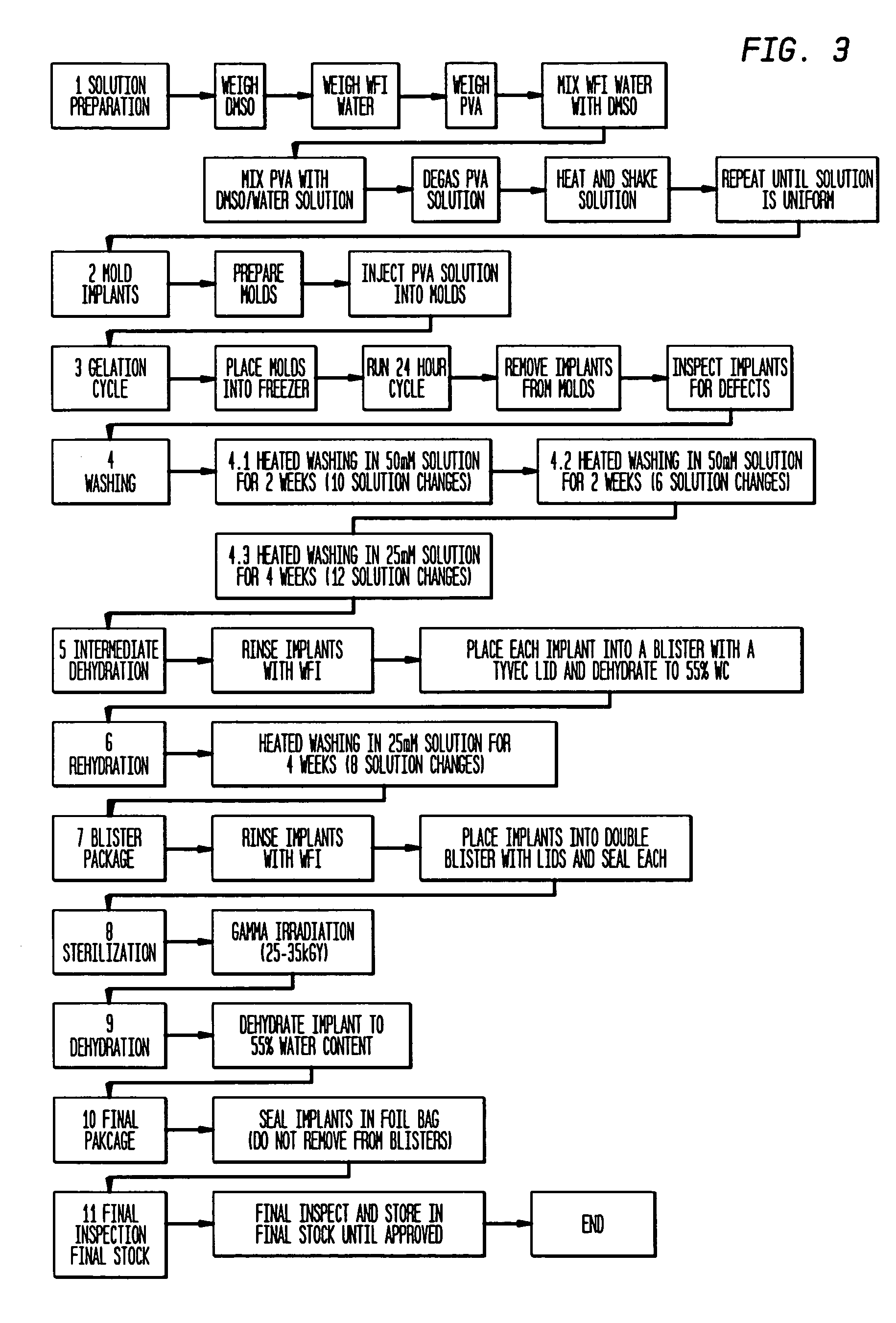Ion treated hydrogel
a hydrogel and hydrogel technology, applied in the field of artificial disc nucleus made of hydrogel, can solve the problems of degeneration of intervertebral disc, final pathological changes, back pain, etc., and achieve the effect of preventing fluid leakage, restoring the normal function of the nucleus, and preventing fluid leakag
- Summary
- Abstract
- Description
- Claims
- Application Information
AI Technical Summary
Benefits of technology
Problems solved by technology
Method used
Image
Examples
example 1
[0046]The implants used in this study were fabricated in a class 1,000 clean room using the manufacturing flow chart of FIG. 3. The implants were made from a 98.5% hydrolyzed (PVA-117, Kuraray, Japan) poly (vinyl alcohol) (PVA) hydrogel that is physically crosslinked through the use of a freezing-thawing technique. Any water used in the fabrication of the device was USP Sterile Water-for-Injection (WFI) (Abbott Laboratories, North Chicago, Ill.). All of the implants tested were washed for twelve weeks in 0.9% phosphate buffered saline (PBS) (cat. #1000-3, Sigma Diagnostics, St. Louis, Mo.) with 50 mM potassium carbonate (SigmaUltra, cat. #P-5833, Sigma Chemical Co., St. Louis, Mo.) for the first 4 weeks of the wash cycle. The implants were then washed in PBS plus 25 mM potassium carbonate for the last 8 weeks of the wash cycle. The implants were sterilized with 25-35 kGy of gamma sterilization and implanted at their approximate in vivo equilibrium water content which was at approxim...
PUM
| Property | Measurement | Unit |
|---|---|---|
| water content | aaaaa | aaaaa |
| osmotic pressure | aaaaa | aaaaa |
| angle | aaaaa | aaaaa |
Abstract
Description
Claims
Application Information
 Login to View More
Login to View More - R&D
- Intellectual Property
- Life Sciences
- Materials
- Tech Scout
- Unparalleled Data Quality
- Higher Quality Content
- 60% Fewer Hallucinations
Browse by: Latest US Patents, China's latest patents, Technical Efficacy Thesaurus, Application Domain, Technology Topic, Popular Technical Reports.
© 2025 PatSnap. All rights reserved.Legal|Privacy policy|Modern Slavery Act Transparency Statement|Sitemap|About US| Contact US: help@patsnap.com



